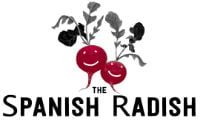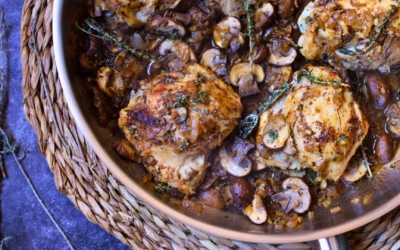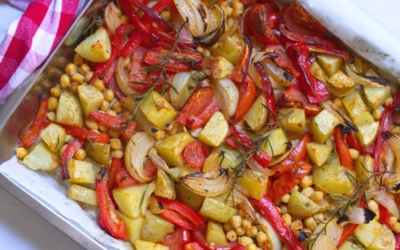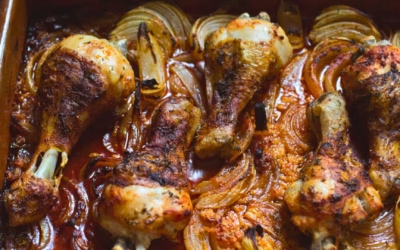Cantabria Foodie Guide
(What To Eat, Regional Produce, Wines, Recipes, And Travel Tips.)

Cantabria is a charming region nestled in the northern part of Spain. It’s known for its rich history, cuisine, and natural beauty. Whether you’re a beachcomber, a hiker, or just want to take in the views, a visit to Cantabria has something to offer everyone.
You’ll be spoiled for choice when it comes to outdoor activities and food. Plus, you’re next to other incredible foodie regions like The Basque Country, Asturias, and Castilla y Leon. This Cantabria foodie guide will explore the most popular dishes from the region, plus look at famous produce from the region, including food and drinks.
Cantabria: Weather and Best Time to Visit
Cantabria is known as being in the “Green Spain” zone, and has a much more temperate climate compared to the southern regions of Spain, with a mean temperature of 14°C (57.2°F). The region receives around 47 inches/120 cm of rain annually, and it frequently snows in the mountainous zones during the colder months.
The best time to visit the Cantabria region is from July until September. These months are typically the driest with the least amount of rainfall and the most sunshine. But it’s best to expect some rain and cool nighttime temperatures, even during the summer, as the weather can be unpredictable.
In August, temperatures average around 19°C/66°F, but be prepared for very hot temperatures too, as it can reach well over 30°C/86°F during the day in summer.
Cantabrian Cuisine: Fresh and Local
Cantabria’s culinary tradition is deeply rooted in the use of fresh, locally sourced ingredients. Whether it’s the lush pastures that provide high-quality dairy products or the abundance of fruits and honey, Cantabria excels in the farm-to-table philosophy.
It’s famous for Queso Nata de Cantabria, which is recognized as a PDO (Protected Designation of Origin). This is made from cow’s milk but the region also produces many types of cheeses made from sheep’s milk and goat’s milk too.
Cuisine from Cantabrian Mountains: Picos de Europa
- Queso picon: A strong blue cheese that is very creamy. It is served smeared on top of steaks, or as part of a cheese platter.
- Cocido montañés: Made with white beans, collard greens, pork ribs, pancetta, chorizo, potatoes, paprika, garlic, and good-quality olive oil.
- Alubias de Cantabria: A rich bean stew often made with Carico montañés (Mountain beans that are similar to kidney beans). There is also a version made with white beans (called Alubias Blancas de Cantabria).
- Cocido Lebaniego de Potes: Lebaniego stew is a staple found throughout the mountains of Picos de Europa, made with chickpeas, cabbage, chorizo, black pudding, and pancetta.

Popular Cantabria Coastal Dishes
Given its location along the Bay of Biscay, Cantabria boasts an array of impressive seafood delicacies. From succulent anchovies to world-class sea urchins, if you love seafood, this region will not disappoint.
Here are just a few seafood ingredients to look out for at coastal restaurants and bars along the Cantabrian coast:
- Boquerones (anchovies) grilled or battered, or pickled in vinegar, oil, and garlic.
- Bonito del Norte (Northern tuna): Found grilled when in season or preserved in olive oil throughout the year.
- Calamares (squid).
- Chipirones (smaller-sized squid) cooked in its ink (chipirones a su tinta).
- Cachon (cuttlefish) also known as Sepia in other parts of Spain.
- Caracolillos (periwinkles) sea snails, a favorite tapa or appetizer.
- Mejillones (mussels) served either steamed or with a tomato sofrito sauce.
- Salpicón de marisco (mixture of pickled seafood).
- Percebes (barnacles) also known as Gooseneck barnacles, are a delicacy throughout the region.
- Navaja (razor clam) served grilled with oil and garlic.
- Sorropotún de bonito (tuna belly stew): made with simple locally sourced ingredients including tuna belly, onions, green peppers, potatoes, fish stock, stale bread, parsley, and seasoning.

Other Famous Dishes from Cantabria
- Cocido Montañés: This hearty dish combines beans, chorizo, and morcilla (blood sausage) with greens like collard greens or cabbage. It’s a comfort food staple.
- Rabas de Calamar: This is a popular Cantabrian dish consisting of deep-fried squid rings. The squid is typically coated in a light batter made from flour and sometimes a touch of paprika, giving it a lovely crisp texture. It’s often served with a side of aioli or lemon.
- Anchoas en Vinagre: Marinated anchovies are a local specialty — they’re typically preserved in a mixture of vinegar, olive oil, and aromatic herbs, and they’re not to be missed.
- Borono: Borono is a hearty Cantabrian dish made from mashed or pureed potatoes and morcilla. The morcilla adds a rich and savory flavor to the creamy mashed potatoes.
- Bonito encebollado: Featuring Bonito tuna, it’s simmered with onions, green peppers, and tomatoes.
- Pimientos rellenos de marisco: This dish consists of bell peppers stuffed with a mixture of seafood, often including shrimp, crab, and other local catches. The peppers are typically served in a rich seafood sauce.
- Revuelto de Oricios: Oricios are sea urchins, and this dish is a scrambled egg preparation with oricios as the star ingredient. The creamy, briny taste of the sea urchins makes this extra special
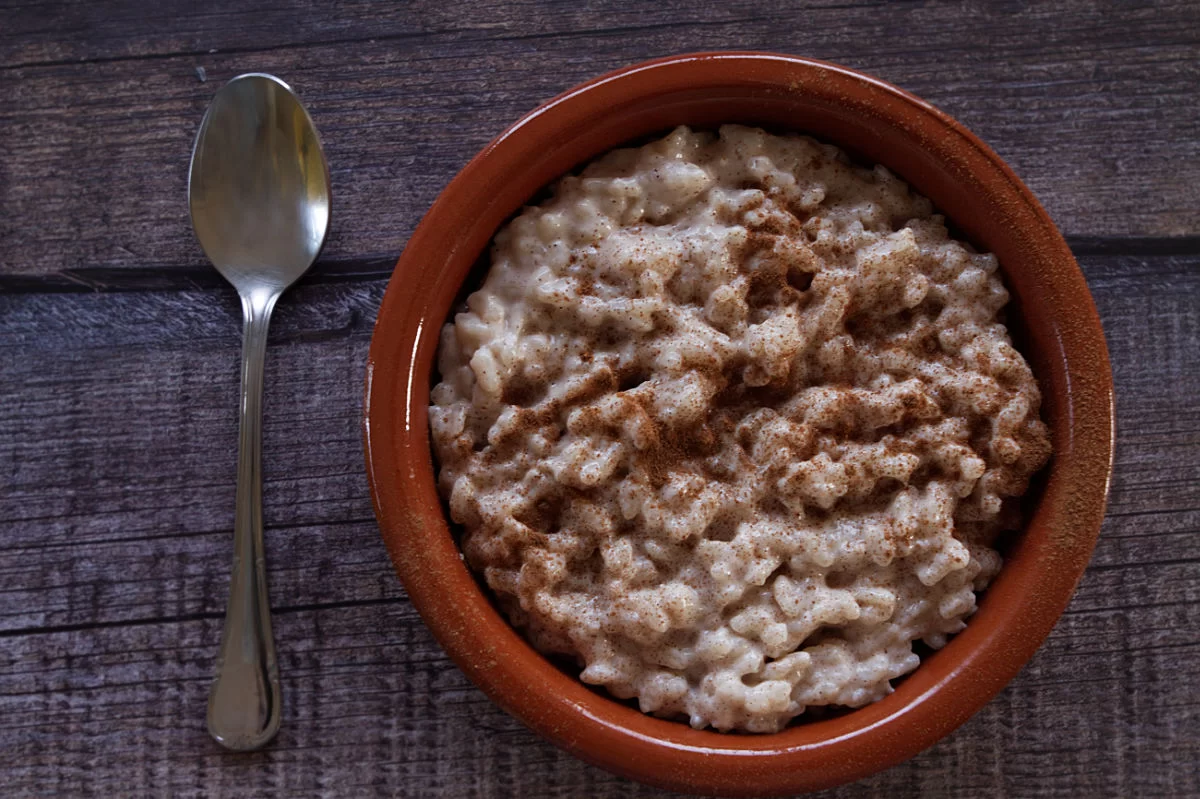
Desserts from Cantabria
- Sobao Pasiego: End your meal on a sweet note with Sobao Pasiego, a buttery, sponge-like cake that’s perfect with a cup of coffee.
- Arroz con leche: Another dessert found in Cantabria (and many other Spanish regions), arroz con leche is a rice pudding made with milk, sugar, and often a hint of cinnamon and other spices.
- Corbatas de Unquera: A typical sweet pastry made with flour, butter, sugar, egg whites, almonds, and salt.
Drinks from Cantabria
- Orujo de Cantabria: Orujo is a traditional Spanish spirit made from grape pomace. In Cantabria, you can find variations of Orujo known as “Orujo de Liébana,” which is produced in the Liébana Valley. It’s enjoyed as a digestif.
- Sobao Liqueur: Sobao Pasiego (see desserts above), has inspired a Sobao liqueur. It captures the flavors of the traditional cake and can be sipped on its own or used in cocktails and desserts.
- Local Craft Beers: The craft beer scene is big in Cantabria, and you can visit local breweries producing a variety of artisanal beers that incorporate regional ingredients and flavors.
- Local Ciders: While not exclusive to Cantabria, you can find locally produced ciders in the region. Asturian and Cantabrian ciders are known as “sidra,” and are traditionally poured from a height to aerate the drink as they have no carbonation.
- Herbal Liqueurs: Some Cantabrian liqueurs are infused with herbs and botanicals from the Cantabria region, creating unique and flavorful herbal liqueurs that can be enjoyed as aperitifs or digestive.
- Siderit – A Cantabrian gin made with a selection of locally sourced herbs and spices.
Getting to Cantabria
Has all this amazing food and drinks got you excited and ready to visit this incredible region’ Good news, Cantabria is easy to reach and by plane, boat, train, or car.
Here are a few options for getting to Cantabria.
By Air
Santander Airport is the only air link in the region of Cantabria. It is a modern international airport located South of Santander city center beside the port of Santander. The airport is well located and only around 15 15-minute drive or taxi into the center of town. There is also a Metro from the airport directly to the city center which takes around 25-30 minutes.
The airport serves domestic connections to other Spanish cities including Madrid, Barcelona, Valencia, Alicante, Malaga, Palma Mallorca, Ibiza, Menorca, Seville, and Granada.
If you are looking to fly to Cantabria from an international destination, it is likely cheaper to fly into a larger airport hub like Madrid or Barcelona, and then schedule a domestic flight to Santander airport.
By Train
The national train network in Spain is modern, efficient, and very reliable. The main Train station in Santander is located in the Plaza de las Estaciones. Renfe connects Santander to Palencia, Valladolid, Madrid and Alicante.
Renfe Cercanías AM (formerly known as FEVE) has a rail network connecting many cities in northern Spain. It connects the city to Bilbao, Oviedo and other towns in Cantabria.
Major City Train connection and durations:
- Madrid > Santander: Approx 4.5 hours
- Barcelona > Santander: Approx 7.5 hours
- Bilbao > Santander: Approx 1.5 hours
- Gijón > Santander: Approx 3 hours
Booking a ticket on both RENFE and Renfe Cercanías AM is easy and can be purchased at any major train station in Spain, or online at the RENFE.com website (the link is below).
By Car
If you decide to come to Santander by car, the city has an excellent road network. The A-8 Cantabrian Highway and the A-67 Cantabria-Meseta Highway connect the Cantabria region with the surrounding regions of Spain.
Driving is a great way to get around the Cantabria region and it is often the cheapest and most time-efficient method of transport. Be mindful of the varying road conditions, especially in the mountainous regions from October until March.
The Picos De Europa mountain range receives snow in the winter and some roads can be difficult to navigate. If traveling by car in the winter months, take necessary precautions and check local weather information for any pending road closures.
Driving times and distances to other major Spanish cities:
- Madrid > Santander: 4 hours, 30 minutes (460 km/285 miles)
- Barcelona > Santander: 7 hours, 30 minutes (709 km/ 440 miles)
- Bilbao > Santander: 1 hour, 8 minutes (99 km/61.5 miles)
- Gijón > Santander: 1 hour, 50 minutes (176 km/109 miles)
- San Sebastian > Santander: 2 hours, 15 minutes (196 km/122 miles)
Useful Links and Information
Before you shuffle off to pack the suitcases, some additional useful information can be found at these websites:
- Cantabria Tourist Information
- Renfe – Spanish Train Travel
- Santander Airport Official Website
- Santander Tourist Office
Emergency Services (Dial 112 in Spain). Emergency operators in Spain can speak English as well as Spanish.

Learn the secrets of the Mediterranean Diet –
It’s no secret that the Mediterranean diet is healthy. It has been proven in numerous studies from all corners of the world, it aids weight loss, reduces the risk of heart disease and type 2 diabetes, as well as a growing list of other health benefits.
Find out what’s most exciting about the diet and create some incredibly tasty and simple Spanish recipes.
Looking for more travel inspiration?
Check out our other Regional foodie guides from all over Spain!
The Basque Country
Straddling part of the border between France and Spain, the Basque Country (País Vasco) has an incredibly diverse landscape that extends far beyond the renowned foodie capitals of larger cities such as San Sebastian and Bilbao. While the region is small, it has the highest concentration of Michelin-starred restaurants in the world per capita.
Galicia
Exploring the far northern Galicia region by food is like opening a foodie treasure trove. With a rugged coastline that divides two seas, undulating hills, and large fertile plains that benefit from the highest annual rainfall in Spain. Galicia is blessed with exceptional quality fresh produce, seafood, meat, and dairy products at every turn.
Galician cuisine is perhaps most famous for the stunning dessert, the Tarta de Santiago, but visitors to the region should take time to explore the many delicacies and dishes that are made in the region.
Madrid
They say that all roads lead to Madrid and a small stone slab lies discretely within Madrid’s Sol Plaza celebrating the geographic kilometer ZERO of Spain. But, it’s just a short stroll in any direction where you’ll find the rich aromas of authentic Spanish food wafting from the alleyways and narrow cobbled streets that are lined with Madrid’s famous tapas bars and prestigious restaurants.
Madrid is not only the geographic center of Spain but also the renowned melting pot where Spain’s culinary cultures merge. This is no more evident than in the enormous range of Spanish and international cuisine on offer throughout the capital, and with nearly 10,000 restaurants within the Madrid region, you’re spoilt for choice!
The Valencia Region
With its white-sand beaches and turquoise water of the Mediterranean Sea, the Valencia region harbors some of the best cuisine and fresh produce in Spain. Orange groves are dotted all the way up and down the region, and the rich fertile soil makes for ideal vineyards, producing excellent wines. It’s also one of only two UNESCO-listed locations for gastronomy and is home to many of Spain’s most renowned restaurants.
Catalonia / Cataluña
The Catalonia region is perhaps best known for its thriving capital, Barcelona, but a close second when you mention Catalonia is the food. The region offers a wealth of authentic Spanish cuisine that has resonated all around the world.
With its borders spanning from the Mediterranean Sea in the east, to the stunning rugged grazing plains of Aragón, to the picturesque mountainous zones of the Pyrenees mountain ranges, the Catalonia region has it all!
The Spanish Radish Blog
Garlic Mushroom Chicken Thighs
Garlic Mushroom Chicken Thighs Garlic mushroom chicken thighs | An easy one-pan mediterranean chicken recipe that’s ideal for busy weeknight dinners. A rich, aromatic one-pan chicken recipe that’s low-carb and features golden...
One-Pan Roasted Mediterranean Vegetables
One-Pan Roasted Mediterranean Vegetables Looking for a healthy, hands-off recipe that delivers big flavor with almost zero effort? These One-Pan Roasted Mediterranean Vegetables are your new go-to. With just a few pantry...
Spanish Chicken Drumsticks – 5 Mins Prep, Made In One-Pan
Spanish Chicken Drumsticks Easy, one-pan Spanish chicken drumsticks with just 5 mins prep and ready in 45 minutes! Looking for a simple, flavorful weeknight meal that requires almost no effort? This Spanish Chicken Drumsticks...
